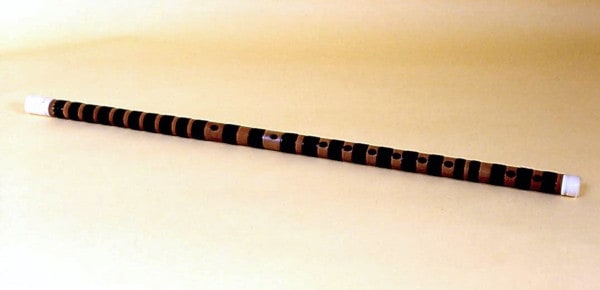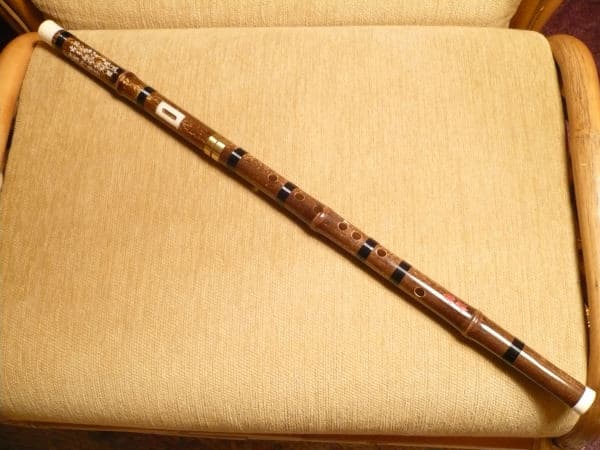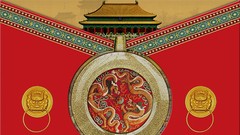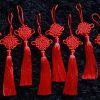
China is a really rich culture with a lot of musical instruments that can be traced back to thousands of years ago with various characteristics and unique sounds.
Not only these instruments have played a great part in entertaining people over the years, but they have also played an important part in China’s history and traditional Chinese culture.
The Chinese wind instruments refer to all musical instruments which are played by passing an airstream through a pipe, and throughout history, there are many different types of the Chinese wind instruments with various shapes, tonal qualities, and playing methods.
Here, we will discuss 6 of the most famous and important Chinese wind instruments.
Xiao

Xiao (箫), the Chinese traditional flute has a very broad historic background and has a very distinct sound even when compared to other Chinese wind instruments.
It is well believed that Xiao, at least the ones that look similar to what we have today, first appeared during the times of the Han Dynasty (206 BC-220 CE). We know this because there is still a well-preserved clay figurine of a Xiao player that originated from the Han period. We can still see this clay figurine in the Nanjing Museum.
According to the historical findings, it is well believed that Xiao was brought to central China by the Qiang people, an ethnic group from the northwestern Sichuan province, then a part of the Silk Road.
These earlier Xiao flutes have a different number of holes and hole placements compared to modern Xiao and even can differ with each other. It was only during the in dynasty (265 to 420CE) that the number and placement of holes are standardized.
The modern Xiao now has six or eight holes, and the extra two holes in the eight-hole version are intended to make some notes easier to play—not to provide extra notes.
The Xiao has a rich and mellow sound quality, very smooth with less wind and air nose. Most Xiao flutes today are commonly pitched in the key of F or G with the key C or D as the bottom note.
Click to see some Xiao models – Opens in new tab.
Xun

Xun (埙) —the Chinese ocarina—is widely regarded as one of the most important legacies of ancient China.
We can trace the Xun’s history to the Neolithic period (10,000–4,500 BCE). In 1956, two Xun instruments that are believed to be made over 6,000 years ago were excavated in Xi’an, in the ruins of Banpo matriarchal society.
These ancient Xuns are made of fine clay, one of them has one finger hole, while the other has only one hole as the mouthpiece.
Many more Xun instruments were excavated, but arguably the most “modern” one is the six-hole Xun that is believed to originate in the Han Dynasty (206 BCE-220 CE), and this form lasted for thousands of years at least until the Qing Dynasty.
We can describe the Xun’s sound as simple and primitive but also mesmerizing with its long sustained notes.
While the Xun was almost forgotten during the 19th and early 20th centuries, many efforts to revive the Xun’s popularity was made since the 1980s. In 1984, Du Ciwen played a song called “Chu’s Song” with a Xun at the opening ceremony of the 1984 Summer Olympic Games in Los Angeles, which made the Xun widely known in the modern world.
Nowadays, many have added more finger holes to the Xun for easier fingering and to allow more notes to be played. Also, the modern Xun is much louder with a penetrating sound. It’s now quite common to see Xuns included in the modern Chinese orchestra.
Related reading: “7 Traditional Chinese String Instruments: History and Facts”
Click to see some Xun models – Opens in new tab.
Hulusi

The Hulusi (葫�� or葫芦丝), or often called the cucurbit flute, is a very interesting wind instrument mainly due to its unique shape.
Also, the Hulusi produces a very smooth sound characteristic, mainly due to its unique design incorporating three different pipes.
Hulusi has a really long history and can be traced back before the times of the Qin dynasty (221 to 206 BCE), and is believed to be a transformation from the Sheng gourd—which we will discuss below—.
It is well believed that the Hulusi was originally popular in the Shan State of Myanmar and the Yunnan Province (the Shan State borders Yunnan to the north), and then gained popularity in central China. The Hulusi retains the same shape even until today.
The center pipe is the one featuring finger holes where we can manipulate the notes and on either side of this center pipe are usually drone pipes. It’s possible that only one of these drone pipes actually works, and the other is only an accessory.
Typically a Hulusi features seven holes in the middle pipe and it contains a reed on the inside of the pipe that vibrates to produce the sound. So, technically the Hulusi is a reed instrument.
The Hulusi is still often performed in China, and in recent years, has been adopted by European and South American composers and musicians.
Click to see some Hulusi models – Opens in new tab.
Dizi

Dizi (笛子), the Chinese transverse flute, is a very important Chinese wind instrument today, widely used in many different genres of Chinese folk music and modern Chinese orchestra.
An important factor contributing to Dizi’s popularity is the fact that it is easy to make and very compact, so it’s easy to carry anywhere.
There are several theories about the true origin of the Dizi. Chinese legends suggest that it was the invention of the Yellow Emperor or Huang Di (a Chinese religious, mythohistorical figure), however, recent archeological findings suggested that the simpler versions of Dizi have been around in China for more than 9,000 years.
The Dizi with the same shape as we have today can be traced back into the 5th century BCE.
The body of Dizi features six finger holes, with an extra hole between the mouthpiece hole and the finger holes. This extra hole is covered by a thin membrane of reed (called the Mo membrane) and is the reason for a Dizi’s soft-humming and bright tone.
While the Dizi shared common features of various transverse flutes from all over the world, only the Dizi has this unique characteristic.
Dizi is widely known as an instrument with a very expressive range and soft, ethereal tone quality, producing a somewhat “floating” sound especially in the middle and upper registers.
The DIzi is also very famous for its ability to emulate sounds of nature, and so is often played by various advanced techniques from harmonics, slides, circular breathing, and more to accommodate this feature.
Related reading: “4 Traditional Chinese Percussion Instruments: History, and Facts (Video)“
Click to see some Dizi models – Opens in new tab.
Bawu

Bawu (巴� or 巴乌) is a free-reed Chinese wind instrument despite shaped like a traditional flute. It is a side-blown wind instrument that is played in a horizontal manner.
Not much is known about Bawu’s history, but it is believed to be originated from the Yunnan Province, played by Yi, Miao, Hani, Dai, and other ethnic minorities, and various Bawu instruments have been found all over China from different time periods.
Bawu is a rather unique instrument. When the player blows into the Bawu, the metal reed vibrates to create a sound. The sound characteristic is quite similar to Dizi—which we have discussed above— in many different ways.
However, we can differentiate the two by paying attention to their consistency. The Bawu has a more consistent timbre, while the Dizi—due to its Di Mo membrane—- has a more fluctuating and vibrating timbre.
Bawu’s soft, mellow, rich, and consistent tone has allowed the instrument to be very popular in modern times, especially in film soundtracks. For instance, Bawu was featured heavily in the soundtrack for Crouching Tiger, Hidden Dragon.
Bawu is now a standard wind instrument throughout China, typically used in solo compositions and performances.
In the past decade, Bawu was also widely adopted by European composers and musicians, further establishing its relevance.
Click to see some Bawu models – Opens in new tab.
Sheng

Sheng (笙) is another Chinese wind instrument with a very unique shape and is also one of the oldest musical instruments in China. In fact, Sheng is widely regarded as the oldest musical instrument that utilized reed to produce sound.
The development of the ancient Sheng can be traced back to more than 3,000 years ago.
In 1978, the earliest known form of Sheng, the Pao Sheng was excavated in a royal tomb that is believed to be at least 2,400 years old. The name “sheng” originates in the poems of Shijing, dating back to the 7th century BCE.
All of these ancient instruments featured 17 pipes with a long and curving mouthpiece.
However, the Sheng currently played today is the product of the modern modifications made in the early 20th century that has increased the Sheng’s volume, sound quality, and tonal range.
The earliest recorded modifications were made by Zheng JinWen (1872–1935), which increased the number of pipes to 32 from 17 (although 17-pipes Shengs are still widely used today).
Sheng produces bright and soft tonal quality with deep and loud bottom notes and clear middle notes. Very capable of performing harmonies, and is often used to accompany Suona (Chinese horn) and various Chinese flutes especially Dizi.
Click to see some Sheng models – Opens in new tab.
Online Courses about Chinese Culture from Udemy (Aff.link)

Stay in Touch
 Join our newsletter by using the forms on this website or click here!
Join our newsletter by using the forms on this website or click here! Follow us on Google News
Follow us on Google News Follow us on Facebook
Follow us on Facebook
Featured image: Section of the Chinese painting Night Revels of Han Xizai, handscroll, ink and colors on silk, 28.7 x 335.5 cm. Original by Gu Hongzhong (10th century), 12th-century remake from the Song Dynasty. Collection of the Palace Museum in Beijing.



